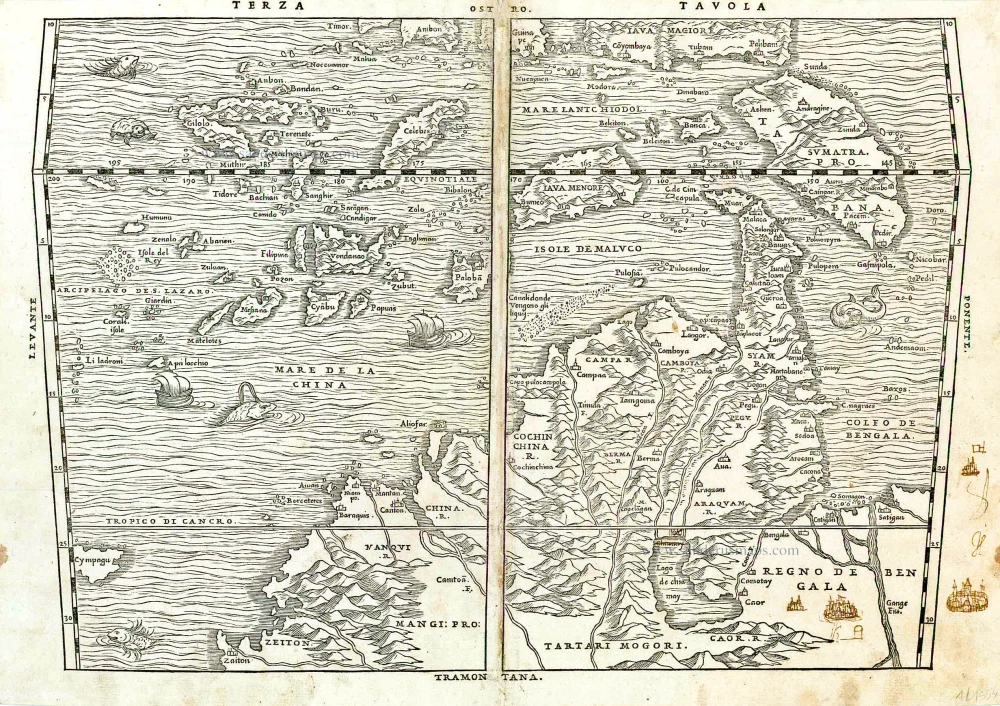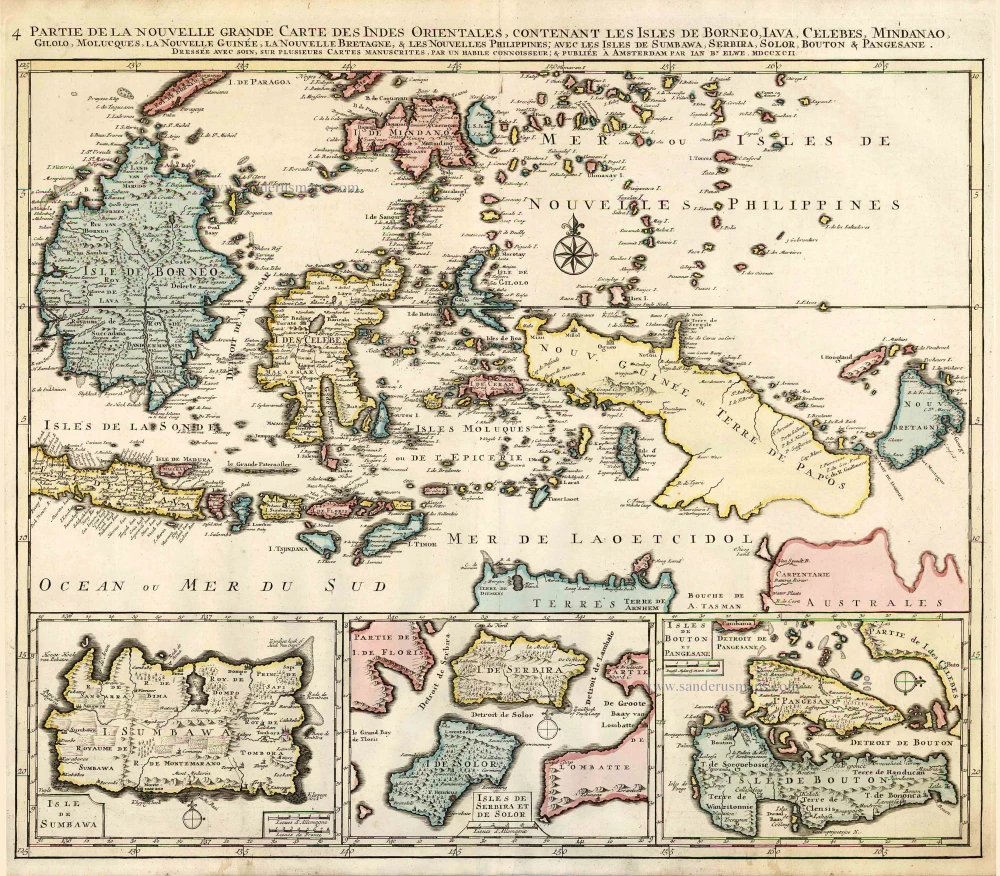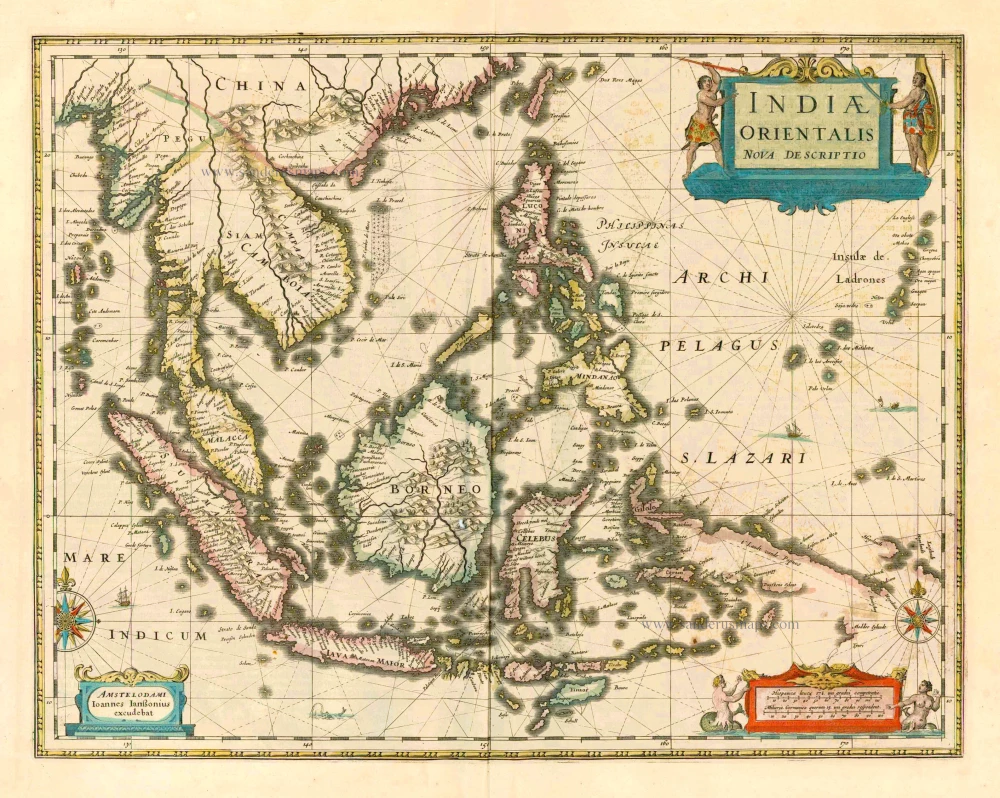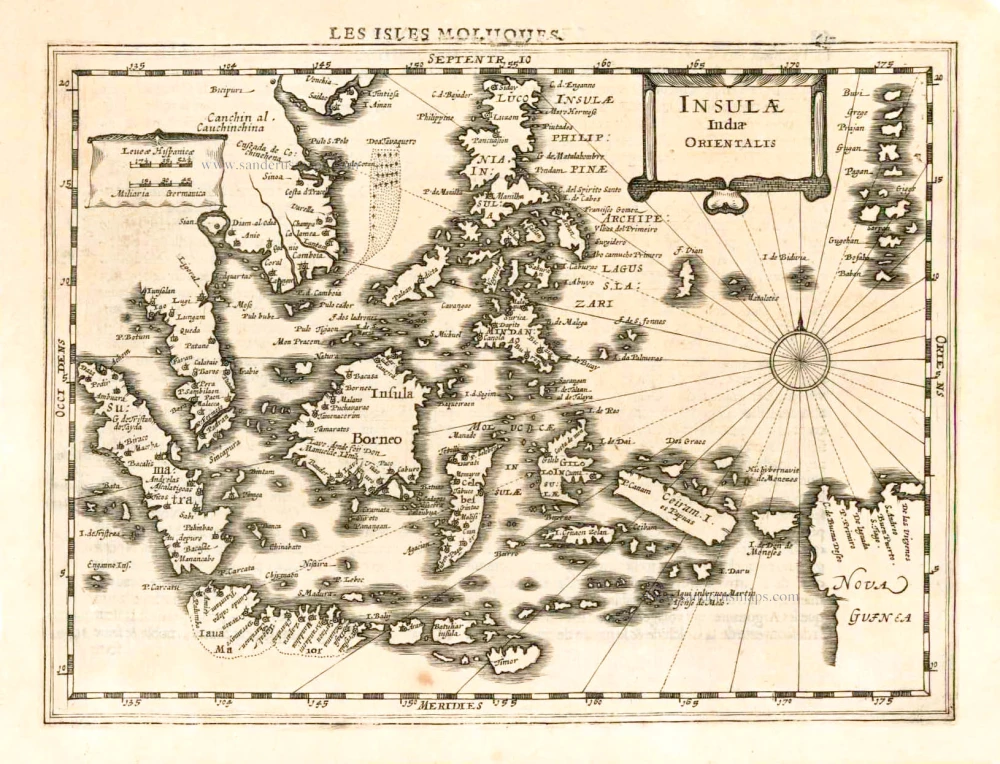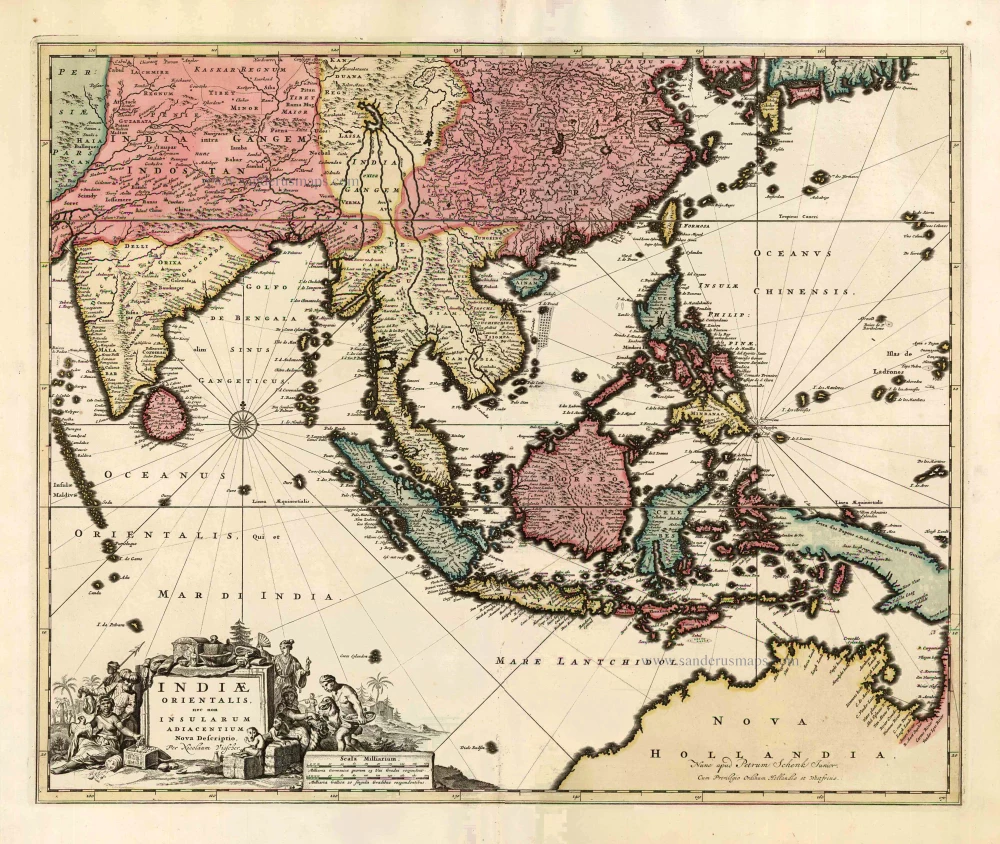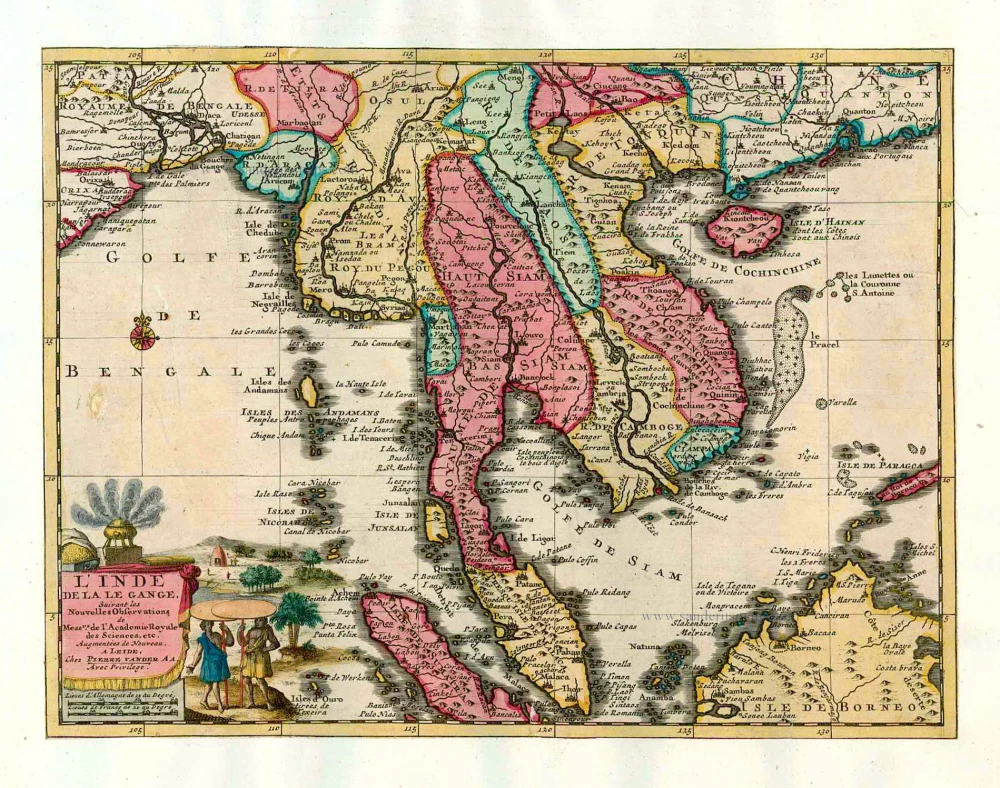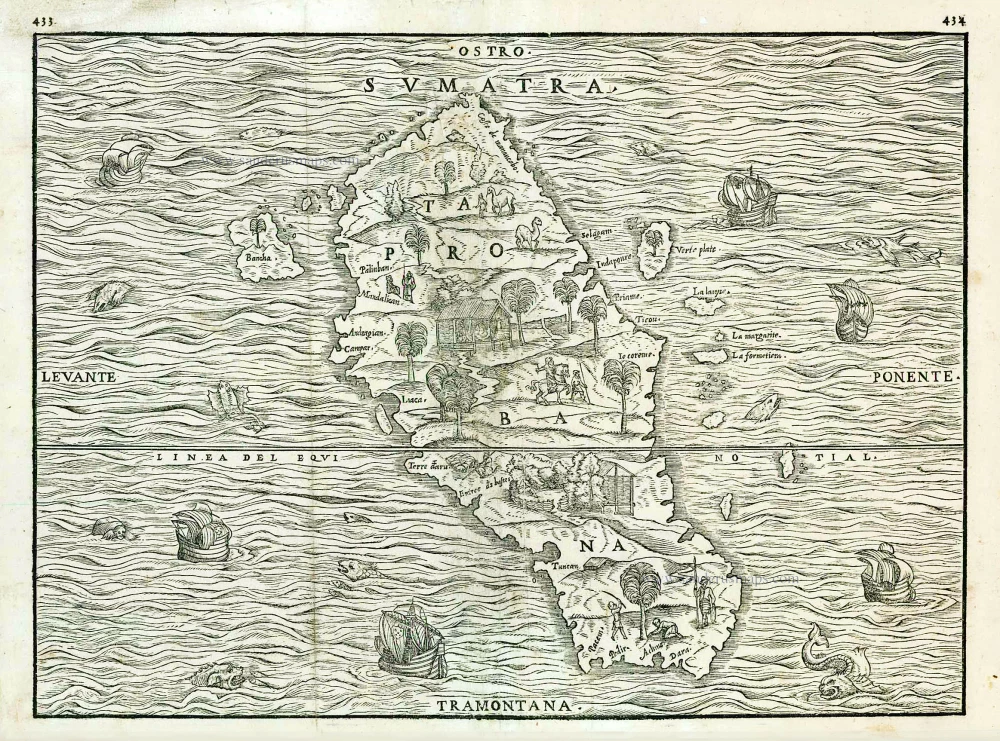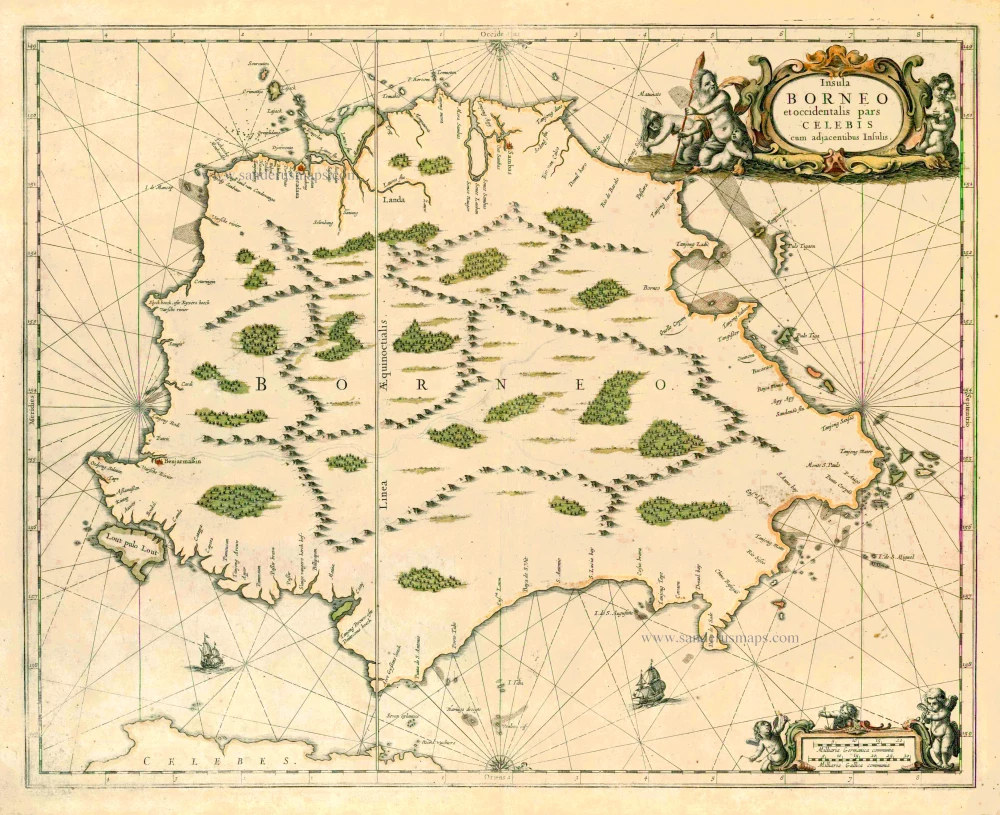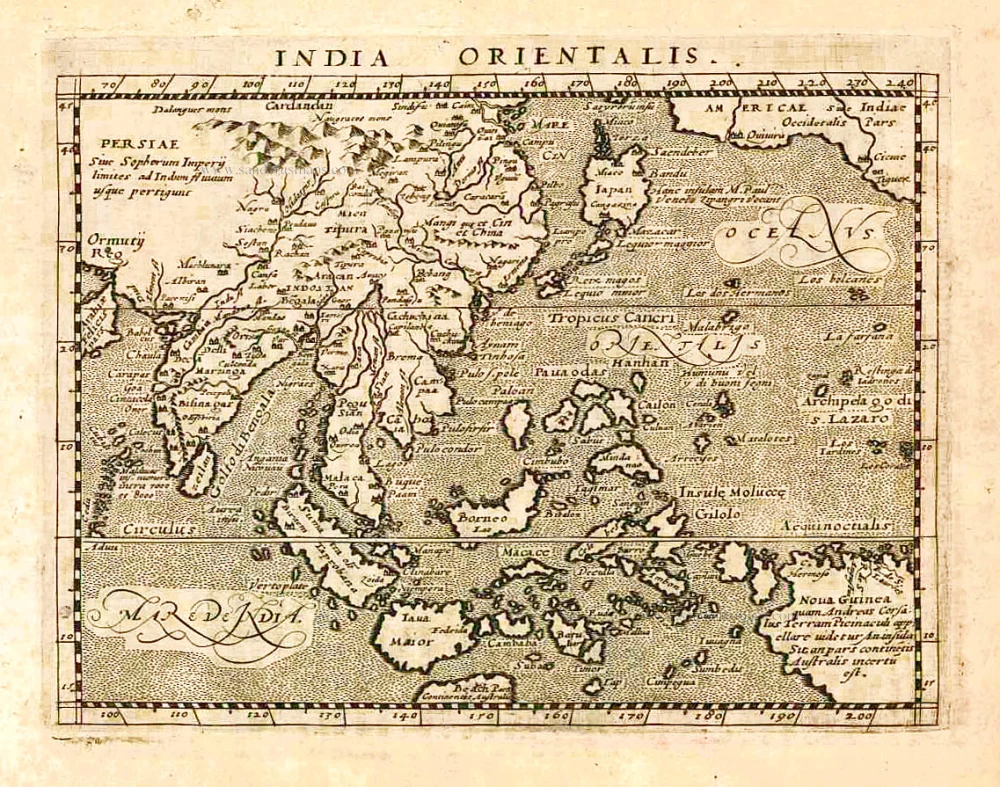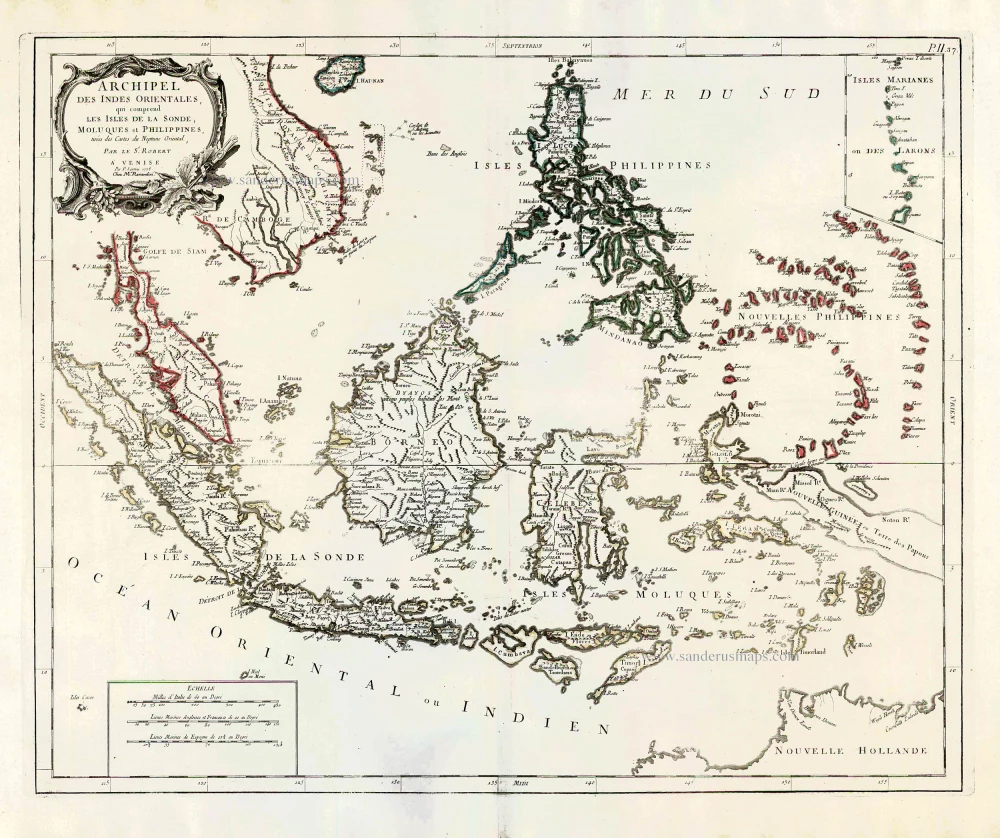Southeast Asia with China, Japan and the Philippines, by G.B. Ramusio. 1554
This map appeared for the first time in the second edition of Vol.1 of Ramusio's Delle Navigationi et Viaggi in 1554. The first edition of Vol.1 from 1550 only contained a woodcut of the Nile and six plans of the rock-cut churches of Lalibala in Abyssynia. This map is only found in the second edition and was replaced in the third edition of 1563 by a copperplate engraved map. First appearance of the name Philippines (Filipina) on a European map.
Giovanni Battista Ramusio (Treviso, 1485 - Padua, 1557)
Ramusio was the son of Paolo Ramusio, a magistrate of the Venetian city-state. In 1505 young Giovanni took a position as secretary to Aloisio Mocenigo of the patrician Mocenigo family, then served as the Republic's ambassador to France. Ramusio would spend the rest of his career in Venetian service. He was keenly interested in geography, and his position ensured he would receive news of all the latest discoveries from explorers around Europe as they were sent back to Venice. A learned man, fluent in several languages, he began to compile these documents and translated them into Italian, then the most widely understood of the European languages.
Ramusio compiled a collection of voyages which are the most highly valued of the sixteenth century. It is composed of accounts of voyages which had already been published, translated from French, Spanish and Latin, and also of manuscript accounts which appear for the first time. It enjoyed great success, and each of the three volumes appeared in several editions, some containing more narratives than others and minor differences in the maps.
Terza Tavola.
Item Number: 26314 Authenticity Guarantee
Category: Antique maps > Asia > China
Old, antique map of Southeast Asia with China, Japan and the Philippines, by G.B. Ramusio.
Oriented to the South.
Cartographer: Giacomo Gastaldi
Date of the first edition: 1554
Date of this map: 1554
Woodcut, printed on paper.
Size (not including margins): 27 x 39.5cm (10.5 x 15.4 inches)
Verso text: Italian
Condition: Centrefold repaired (in central margin), a few pen-and-ink sketches of cities at lower right.
Condition Rating: A
References: Suarez (SE Asia), pp.130-157, fig. 74; Walter L., #10; Karrow, 30/75.1; Geldart (Philippines), p.14; Nordenskiold 3, 641(3); Durant-Curtis, p.83 #10.
From: Primo Volume, & Seconda editione Delle Navigatione et Viaggi ... Venice, 1554.
This map appeared for the first time in the second edition of Vol.1 of Ramusio's Delle Navigationi et Viaggi in 1554. The first edition of Vol.1 from 1550 only contained a woodcut of the Nile and six plans of the rock-cut churches of Lalibala in Abyssynia. This map is only found in the second edition and was replaced in the third edition of 1563 by a copperplate engraved map. First appearance of the name Philippines (Filipina) on a European map.
Giovanni Battista Ramusio (Treviso, 1485 - Padua, 1557)
Ramusio was the son of Paolo Ramusio, a magistrate of the Venetian city-state. In 1505 young Giovanni took a position as secretary to Aloisio Mocenigo of the patrician Mocenigo family, then served as the Republic's ambassador to France. Ramusio would spend the rest of his career in Venetian service. He was keenly interested in geography, and his position ensured he would receive news of all the latest discoveries from explorers around Europe as they were sent back to Venice. A learned man, fluent in several languages, he began to compile these documents and translated them into Italian, then the most widely understood of the European languages.
Ramusio compiled a collection of voyages which are the most highly valued of the sixteenth century. It is composed of accounts of voyages which had already been published, translated from French, Spanish and Latin, and also of manuscript accounts which appear for the first time. It enjoyed great success, and each of the three volumes appeared in several editions, some containing more narratives than others and minor differences in the maps.

